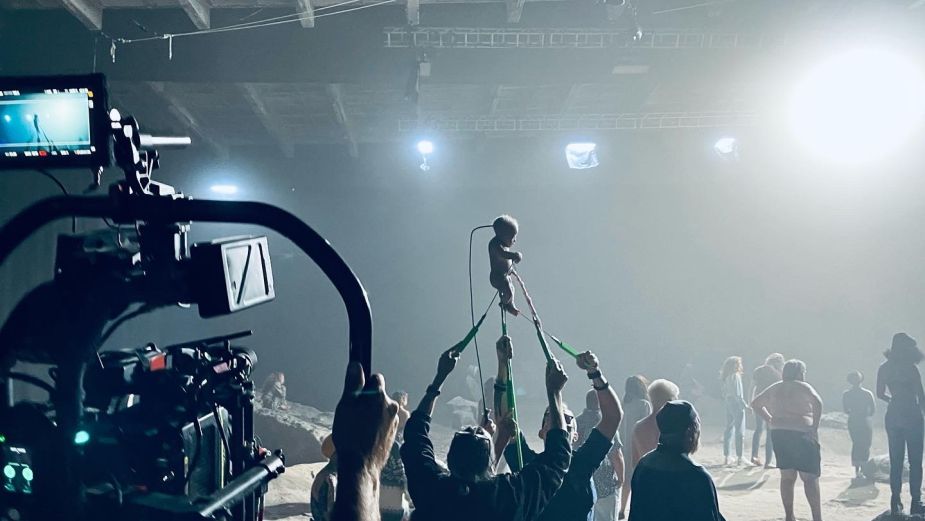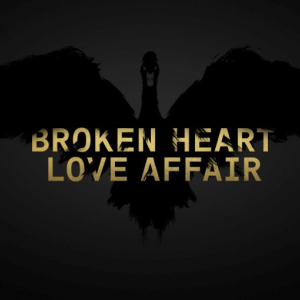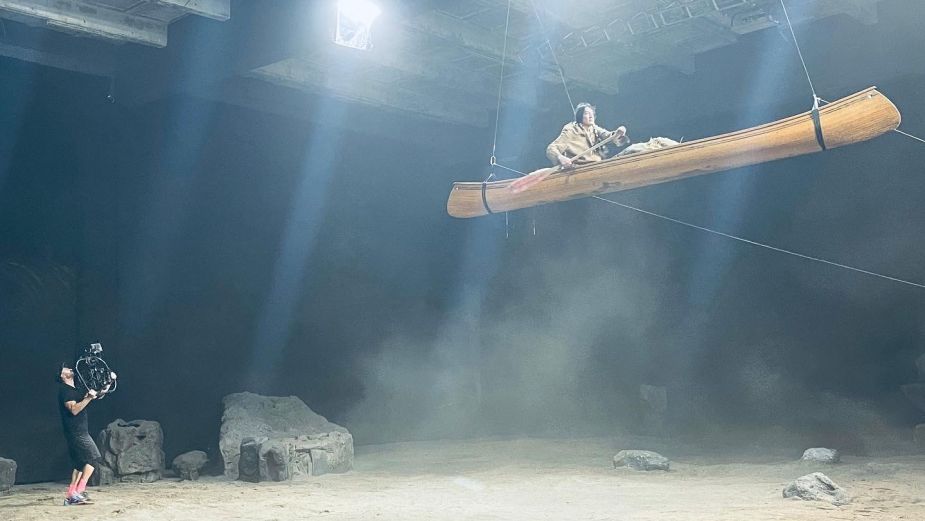
Diving Below the Surface of Human History for the ROM’s Rebrand

Emerging from a pandemic-induced deep sleep, the Royal Ontario Museum (ROM) has undergone a dynamic rebranding and repositioning of the museum’s role and relationship with the city it resides in, Toronto. To announce the arrival of the ‘new’ ROM, Canadian agency Broken Heart Love Affair (BHLA) and Scouts Honour director Mark Zibert created a historical dreamscape of events spanning the entirety of human existence, weaving together an underwater collection of snapshots in time - from brutal wars to game-changing inventions and medical advancements.
After two years of development between the agency, museum and production teams in Canada and South Africa, the revamped brand platform and the accompanying ‘ROM Immortal’ film articulate the ROM’s bold new vision, in an attempt to disrupt the way people think about the museum. Narrated from the perspective of an unborn child, the scenes within the aquatic montage of historical moments depict some of humanity's greatest successes and tragedies, captured powerfully by Mark Zibert’s eye for striking imagery and an emphasis on utilising in-camera effects.
Discussing the creation and production of the ROM Immortal film, director Mark Zibert and BHLA’s CCOs Carlos Moreno and Denise Rossetto spoke with LBB’s Ben Conway about the collaborative efforts of creatives who went above and beyond to realise the project, how the underwater effect was created, the “fierce support” from the ROM’s team that helped bring the film to life, and much more.
LBB> So, Broken Heart Love Affair is the ROM’s agency partner - how did this all come about?
Denise> In early 2021 Broken Heart Love Affair was awarded the assignment with the Royal Ontario Museum to develop the brand’s international platform as its master brand agency of record. We saw a wonderful opportunity for the ROM to be a huge cultural icon, not just in Toronto but in the world. People are aware of the ROM internationally, but we’ve been working to take it a step further. BHLA’s master brand mandate is to transform the ROM and create a new brand by heightening awareness and enriching engagement with the museum. We wanted to create a brand that’s as exciting as the ROM actually is.
LBB> Mark, how did you get involved with this project? Have you worked with BHLA before?
Mark> I’ve had a long and fruitful relationship with Carlos [Moreno, partner and CCO at BHLA] dating back to the start of the ‘SickKids VS.’ campaign. Not unlike the SickKids projects, BHLA brought me in early to work through ideas with Denise [Rossetto, BHLA partner and CCO] and Carlos. The project has been heavily collaborative from the start in every aspect. Within that collaborative process, I include my producers, EPs and partners at Scouts: Simon Dragland, Rita Popielak as well as Eric Kaskens who’s also the co-cinematographer.
LBB> What were your initial ideas for the rebranding? Did 4.6 billion years of history seem like a daunting task?
Mark> The initial concept was simply the word ‘Immortal’, which piqued my interest right away. The word itself is so evocative that it was a great jumping-off point and got the wheels turning immediately. I was way more excited than daunted.
Carlos> It’s an unbelievable institution, but a blank space in terms of its image. Our challenge was how are we going to reignite people’s interest? How do we be a part of the conversation going on in today’s world?
Denise> We wanted to make it feel the opposite of a government institution. We really wanted to ignite people. We always knew we wanted people to not just see objects anymore. If you’ve been to the ROM, you’ve seen objects. We needed people to see that these aren’t objects, they are portals to humanity. Portals to our existence.
LBB> Denise and Carlos, I see you two co-wrote the script - what was that process like?
Denise> Trying to capture all of human existence is extremely hard. By sitting down and writing, we were able to skip through time and still capture the epicness of what we were trying to achieve. The writing helped to move through time and move things in and out – the scene of the rich people jumps to a beheading, and you get a sense of time in different eras without having to go through them literally.
Carlos> The way it was originally written was ‘good/bad, good/bad, good/bad’. And it wasn’t giving the audience a way to absorb those feelings. One of the exercises we went through was grouping emotions. So it was the same writing, but grouping the emotions we wanted people to have in certain moments.
Denise> Originally, we had an epic film that told the story of one object through all of time. But it was way too daunting, and we could not pull it off. So, we started again and tried to capture humanity with a very simple idea that was just the baby and words.
Carlos> The baby represents all of us. Every human that has ever existed. Every person that is here today, and will be here tomorrow. When we collaborated with Mark, we started evolving the idea of telling that story in a more impactful way.
LBB> How involved were you with the creative process? What were some key ideas and decisions that you contributed or ensured were part of the project?
Mark> I was presented with the simple idea of a script being narrated by an unborn baby. I worked closely with Denise and Carlos to retool the script to build a narrative arc and created visual tableaus to represent each line of the film, adding depth and breadth to the piece. We spent a lot of time breaking the script down and building it back up with everyone throwing historical and visual ideas into the mix.
LBB> What shots and ideas immediately sprang to mind after seeing the creative idea?
Mark> Creating the underwater, womb-like environment was an idea I’d been thinking about for a long time. I’d essentially been waiting for the right concept to build on that idea so there was a lot of synchronicity at play in the making of the ROM film.
LBB> What were the motivations and concerns around showing darker parts of history than people would expect - such as the Holocaust? And how does this piece address criticisms that museums are starting to face with respect to displaying ‘stolen’ artefacts?
Denise> The stories need to be told. Some of them are hard to see, but we didn’t shy away from them. We also worked closely with consultants to make sure we were showing stories of these objects that were correct and respectful. ROM wants to be part of the solution and is committed to making the world better by bringing forward these stories so that everyone will understand the origins of the objects it displays and hopefully start the necessary conversations.
What’s fascinating about the times we live in is that with technology, so much no longer feels physically real. The objects in the museum are real, tangible things from times when tragic events happened. My mom volunteers at the museum, and one day a young boy saw the evidence room in a Holocaust exhibition and asked, ‘So these pieces are from the real people from the Holocaust?’. His mind changed that day. We had to capture the beauty of life, but also the tragedy, or it wouldn’t be true.

LBB> How did you create that underwater effect?
Mark> Eric Kaskens and I did a lot of research and discussed various films that have an underwater treatment like The Hunt for Red October, The Shape of Water and Aquaman, so we could zero in on what we did and didn’t like about their approaches. We also did a number of tests to compare techniques and tried to figure out what would give us the most flexibility and control since we had so much material to cover and a relatively limited budget to consider. We ended up using a hybrid technique that borrowed from a number of places but centred us with a heavily ‘in-camera’ approach that was quite simple and elegant. Unlike a greenscreen shoot, where you have to imagine a future result, the in-camera approach had a fairly finished look that kept the energy high and the inspiration flowing.
LBB> How long did production take total and how was that process generally?
Mark> We started developing the idea two years ago and went through a few different versions before landing on the current film. It was a parallel effort really. While we were working through ideas, Lori Davison from ROM was busy fundraising and drumming up support. She’s a fierce supporter of all creative endeavours and put everything on the line to push this concept, much like she did 10 years ago when she helmed the original VS. campaign at SickKids.
Once the project was greenlit, the Scouts team spent approximately four months in Cape Town, developing the idea with the local service production crew at Moonlighting, along with editor Graham Chisholm from Nimiopere, who has made countless mood films; Mark Rajakovic from Rajakovic Electric, who composed the music; Craig Parker and the team at Motif, who did the VFX and allowed us the freedom to take the in-camera approach and last but not least, Clinton. Everyone went above and beyond, not only in terms of efforts but also in terms of creative input. Clinton Aiden Smith at Cosmesis hardly slept for weeks building the animatronic baby. It was a very exciting and extended creative time that allowed the ideas to simmer and evolve into where the film ended up.
LBB> How did you react to the final cut? Which shots are personal favourites for you?
Denise> We were speechless. Graham Chisholm, the editor, is just so talented. He and Mark had worked on it together, and it was so beautiful and epic to see. We love how Mark combined time periods in scenes, bringing together the natural world, such as polar bears and woolly mammoths, with humanity. We were also struck by the clever ways he depicted well-known imagery in his own unique way, like bringing Banksy’s iconic graffiti to life rather than simply showing it. And I love the baby encounter scenes, where we see the child staring into the face of the astronaut. And it’s so heartbreaking to see the baby floating as war breaks out.
Mark> The ‘one-shot’ battle sequence may be the obvious choice. Leander Lacey and his team did an incredible job with the stunt choreography with very little rehearsal time and budget. A couple of the quieter and more thoughtful scenes; I love the Nirvana album cover and the Banksy art-in-motion piece. It’s great if you get the references and they still work if you don’t.
LBB> How closely did you work with the post-production and edit teams? What are some direction notes you gave them?
Mark> We collaborated with the post partners so early on that I wouldn’t even call them post-production. I’m not sure what you call that… Pre-post-production? Since I came from a photography background where I sweat the smallest details in a frame, I really tortured Craig at Motif. Luckily, he’s an artist and was fully behind the film. He eventually agreed that the torture was worth the result, at least he said so…

LBB> What was the hardest challenge you faced on this campaign, and how did you overcome it?
Mark> I don’t think that the hardest challenge was mine. I’m sure it was [ROM CMO] Lori Davison’s - resolute in standing behind such a bold and unusual piece. Lori made it possible for the rest of us to work unfettered while she and BHLA were fighting for the creative behind the scenes.
Denise> It was challenging to transition from how we all usually talk about and show the museum. It took time to bring everyone along, and that really was the committed passion of Lori Davison, who totally believed in it. It was a very fluid experience, with things always changing—like the script order, or visuals we thought we were going to do… The entire team had to be willing to trust each other because it wasn’t set in stone.
LBB> Anything else you would like to add?
Carlos> As much as this is a creative piece, there’s a side to this project that has been very personal to me. The message at the end that we all live on in what we leave behind reflects the ROM, but it goes beyond that. It makes me think about how I’m living my life and what I’m doing as a human to leave something awesome or immortal behind, whether family or something else.
Denise> The day the film launched we were at a screening at ROM. At the end of the film, I looked down and saw that I was wearing my late father’s watch and I realised that he’s living on with me today in the watch he left behind. It was very emotional wearing what my dad had left behind for me.















